Wildflowers: What you can expect this year
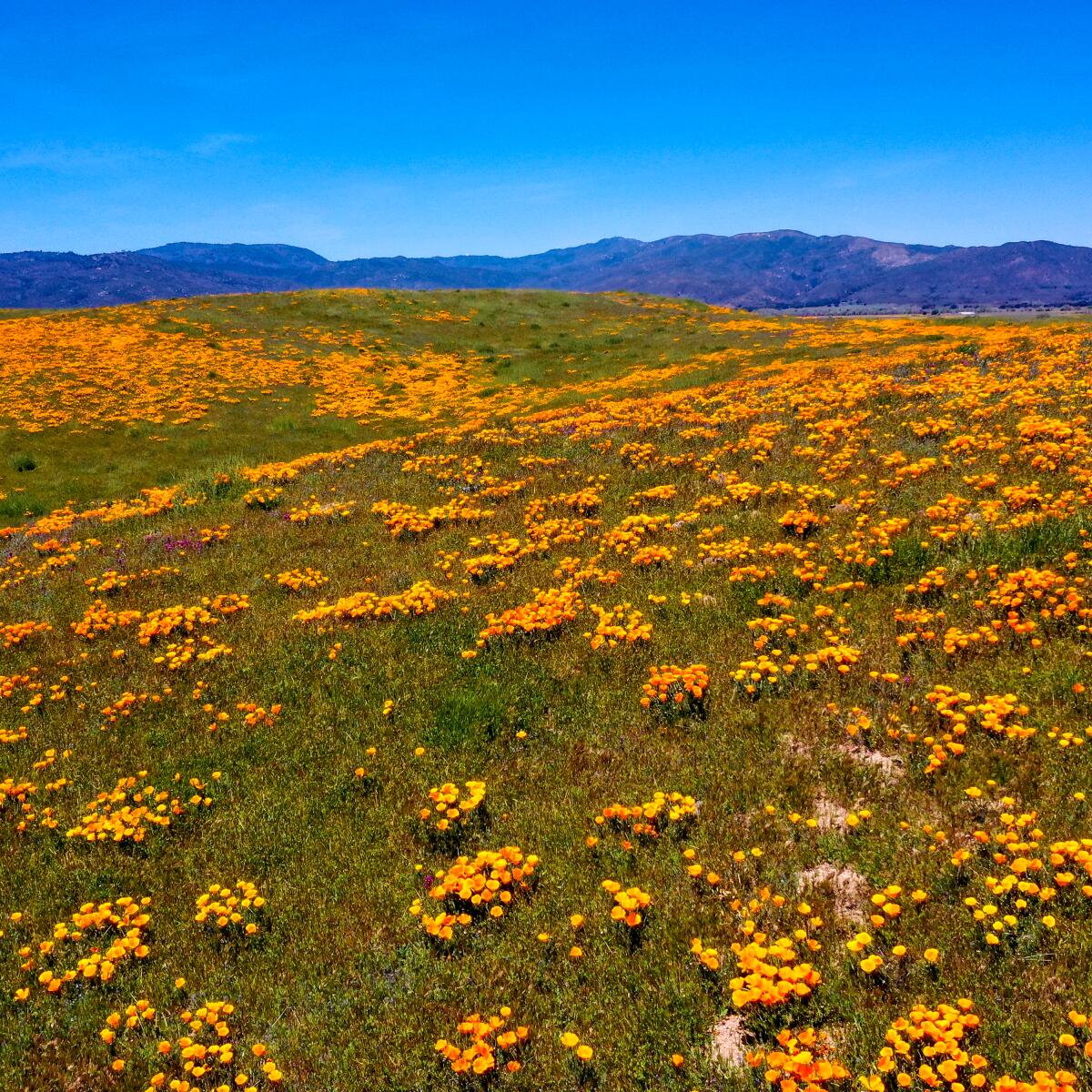
By Mary Forgione
California’s deserts can be magical during wildflower season. This probably isn’t one of those years, and it has nothing to do with our pandemic cancel culture. The traffic-stopping orange poppies from Lake Elsinore to the Antelope Valley likely will be no-shows because the fall-winter season has been drier than usual.
“Nothing is blooming at all,” Death Valley National Park spokeswoman Abby Wines said in an email. “Usually, bloom on the valley floor is mid-February through early April. Given that nothing is blooming yet, and that we didn’t have much precipitation in the fall and early winter, it will not be a spectacular bloom.”
The same is true at Joshua Tree National Park, where officials aren’t “anticipating a large bloom this year because it has been pretty dry,” spokeswoman Hannah Schwalbe said in an email. Anza-Borrego Desert State Park in eastern San Diego County reported the same.
The webcam at the Antelope Valley California Poppy Reserve shows brown and yellow hillsides, which, in a normal rainy season, should now be green. In a statement, the reserve said it’s not expecting “a significant poppy or wildflower year.” Even if we get late rains, it probably won’t help the eastern desert plants because they need early-season rains to germinate. At the Poppy Reserve, additional rain could help whatever blooms and extend the season that typically starts March 1.
Still, you shouldn’t skip a spring desert trip. You can always look for Salt Creek pupfish on a trail in Death Valley or find ancient art on the Pictograph Trail in Anza-Borrego.
But back to the rain. January storms brought “near to above normal” rainfall to Central California but left SoCal parched, according to the National Interagency Fire Center. Also, rainfall timing has changed in the state. California’s rainy season starts about a month later than it did in the 1960s, new research says. “Instead of starting in November, the onset of the rains is now delayed until December, and the rain, when it comes, is being concentrated during January and February,” according to this L.A. Times story. The change has big implications for wildfires and the agencies that must fight them.
3 things to do this week

1. Sign up for a lecture series on the future of the planet. “We don’t invent our natures. They’re issued to us along with our lungs, our pancreas and everything else.” The words belong to Michael E. Mann, a U.S. climate scientist whose nature includes being a warrior on global warming. In the 1990s, Mann created the “hockey stick”-shaped chart that tracked evidence of warming over the last 1,000 years — opening people’s eyes and making him the target of Big Oil and climate deniers.
Mann, whose new book is called “The New Climate War,” will speak March 9 about what it will take to win the fight for the planet. The event is part of the 2021 Wallace Stegner Lectures series called “The Path Forward,” hosted by the Peninsula Open Space Trust in Northern California. Other featured speakers include environmental activist Erin Brockovich (Feb. 23) and chef José Andrés, who started the nonprofit World Central Kitchen to feed people in need after disasters (April 6). Online lectures start at 7 p.m.; $30 gets you in to all three. Click here to sign up.
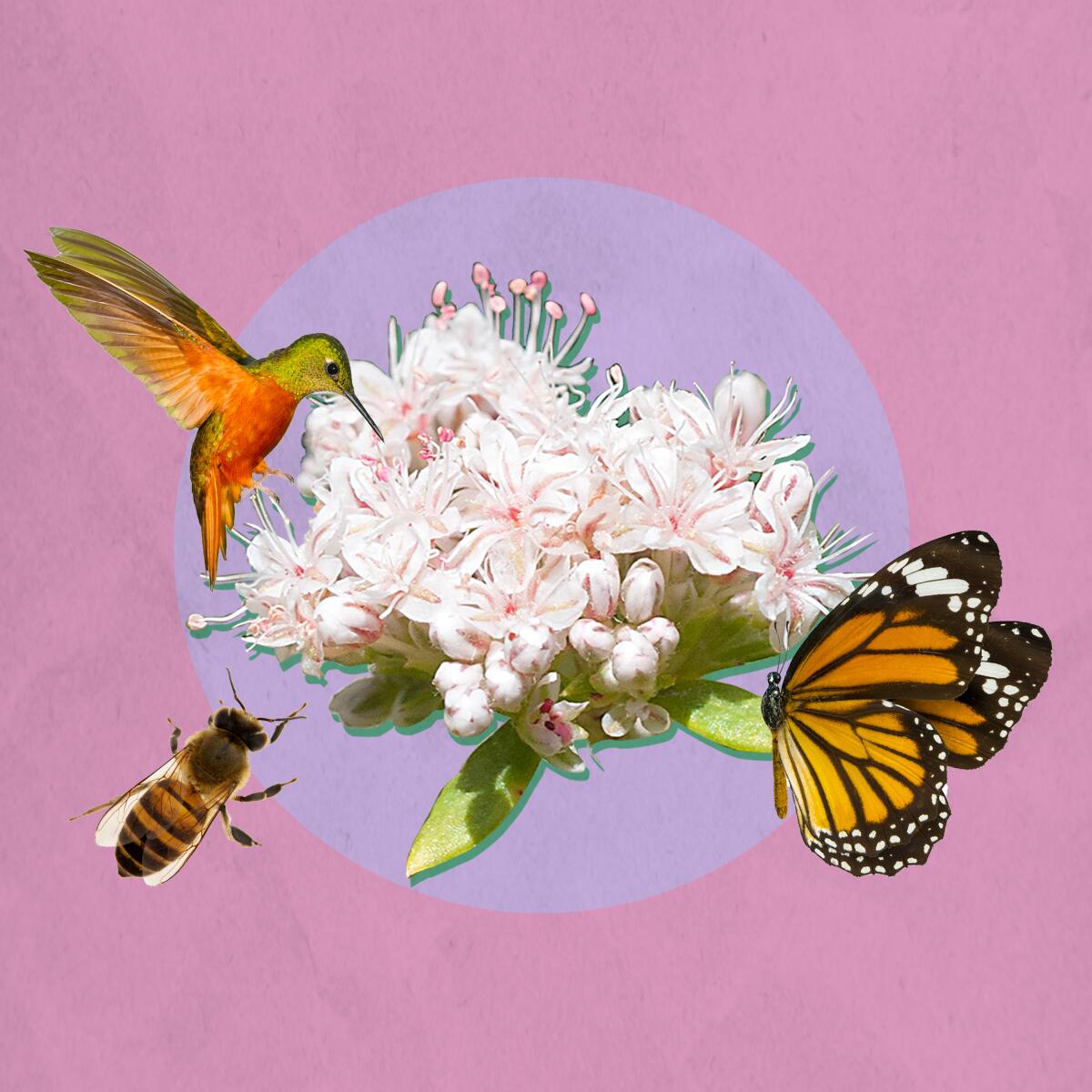
2. Plant a bit of native California habitat — in a flower pot. Native wildflowers are fine growing in the garden, but what about planting them in pots? It can, and should, be done. My colleague Jeanette Marantos writes that adding wildflowers to the urban mix is a good step in helping the butterflies, hummingbirds and bees that rely on them: “If every balcony in L.A. sprouted at least one native plant, ‘we could create green buildings supporting the entire food chain in a very small space,’ said Evan Meyer, executive director of the Theodore Payne Foundation for Wild Flowers & Native Plants in Sun Valley.”
Think about planting cottony buckwheat or the seed foundation’s wildflower balcony mix, with red maids, foothill poppy, bird’s-eye gilia, goldfields and baby blue eyes. The mix can be grown in pots 12 to 14 inches wide and at least 6 inches deep. Learn how to grow wildflowers in pots; full story here.
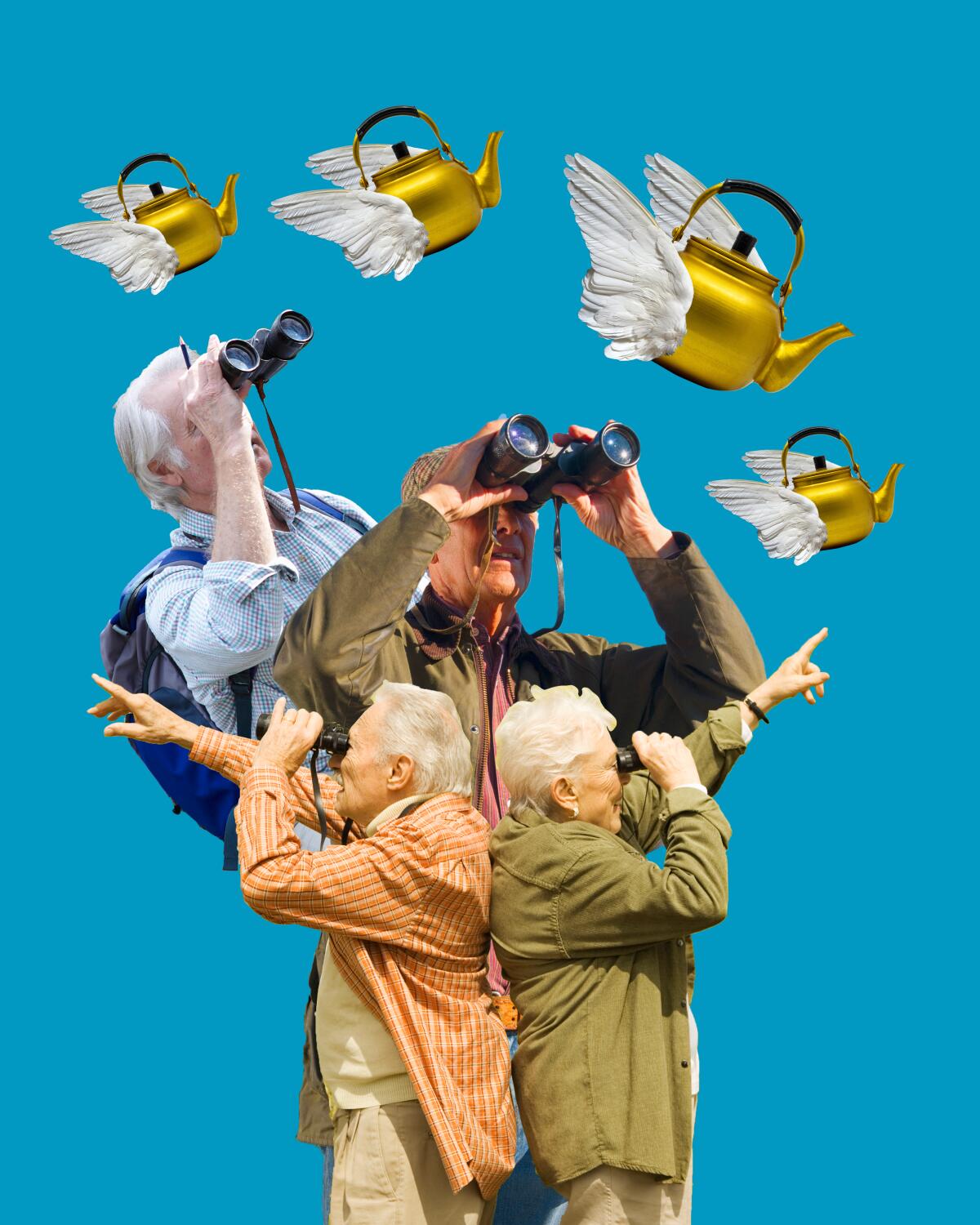
3. Count Swainson’s hawks as they migrate. Swainson’s hawks spend winter in Mexico, Colombia and Argentina before flying as far north as Alaska in summer. At this time of year, the raptors begin to pass through the Borrego Valley in northeastern San Diego County. Hawk watchers will be there to count them (groups are called kettles) and track their comings and goings.
“The number of hawks fluctuate between a low season of around 2,000 to a high season of over 10,000,” Borrego Valley Hawkwatch organizer Hal Cohen said in a recent email. “What sets us aside from other hawk watches is the ability to observe where the hawks roost and when they will continue their journey north.” Now in its 19th year, the event is one of two hawk watches in California. Anyone who wants to help — “No experience is necessary. A set of eyes and binoculars are all that is required,” Cohen said — can sign up to count. (Watchers adhere to strict COVID-19 guidelines.)
The first evening watch starts about 4:30 p.m. and continues until shortly after sundown (5:30 p.m.) on Saturday. The count resumes the following morning at 8 a.m. Send Cohen an email to sign up. “We have had seasons that have produced huge kettles of hawks that could be likened to tornadoes,” Cohen said. Check out more about the hawk watch here.
Cool stuff
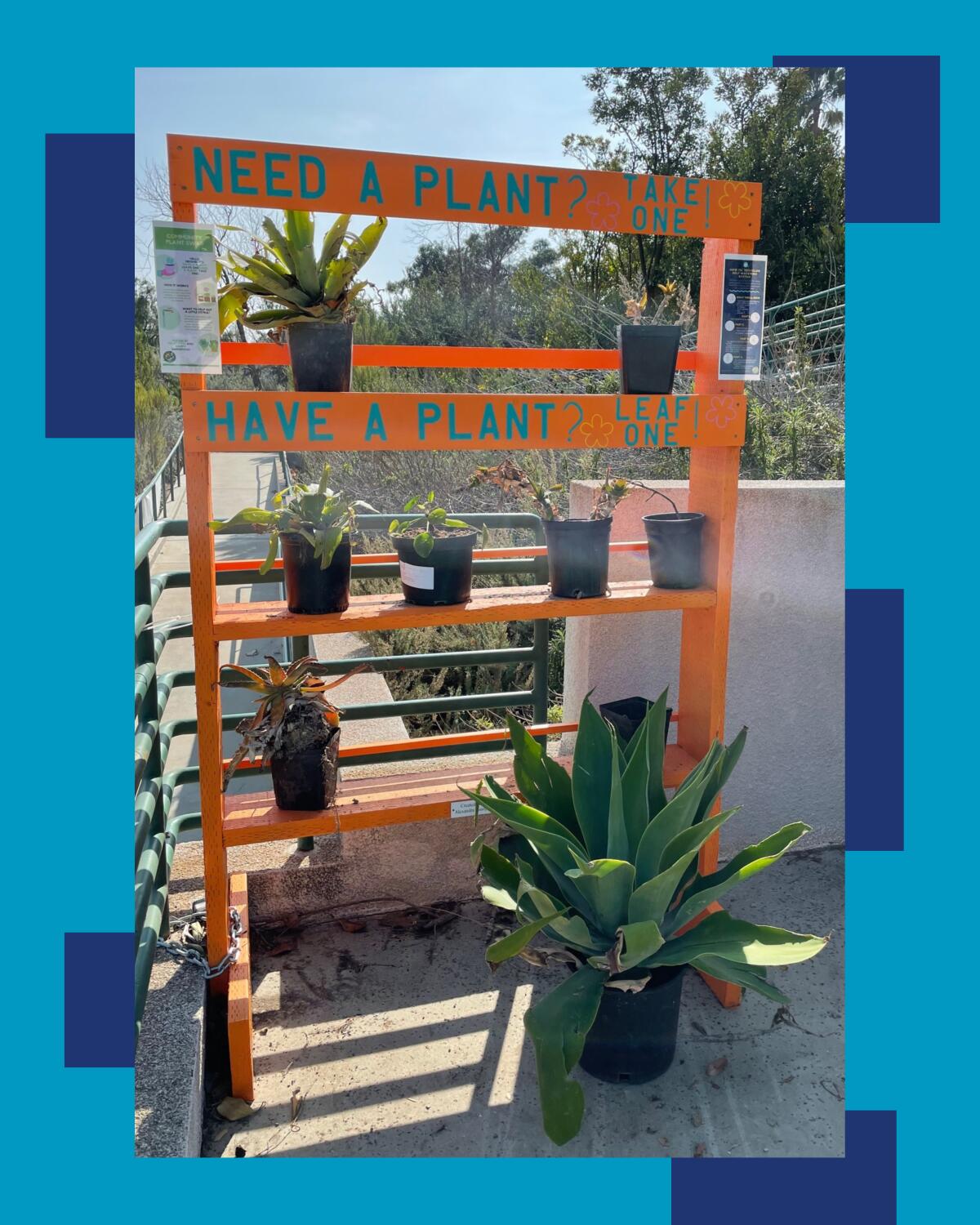
Not all plants work out. Some droop and linger, constant reminders of the dashed hopes you had for greening your home. I found relief in a stack of orange shelves outside the Deane Dana Friendship Park and Nature Center in San Pedro. The sign says: “Need a Plant? Take one. Have a plant? Leaf one.” I left a few of my unsuccessful houseplants in the hope someone with better skills could revive them. I wasn’t expecting to, but I wound up adopting a gorgeous agave that’s pretty hardy (meaning I probably can’t kill it). Plant swaps like this are pretty much pandemic-proof; other swaps are planned at specific places and times. Here are more places to find, trade or leave plants.
The must-read

There was a time when wild animals called L.A. home. I’m not talking about dire wolves and sloths that hung out at the La Brea Tar Pits, rather man-made attractions with exotic animals, a precursor to today’s theme parks. “In carnival L.A., you could visit not just one but two ostrich farms, not just one but two private zoos, a monkey farm in Culver City and another in the Cahuenga Pass, and at least two lion farms: Jungleland, originally Goebel’s Lion Farm, in Thousand Oaks, and Gay’s Lion Farm in El Monte, the place that MGM’s trademark snarling lions called home,” my colleague Patt Morrison writes. And there was an alligator pit at Lincoln Park; sometimes baby alligators got loose during flooding. Read on for more odd L.A. attractions that somehow didn’t last.
Wild things
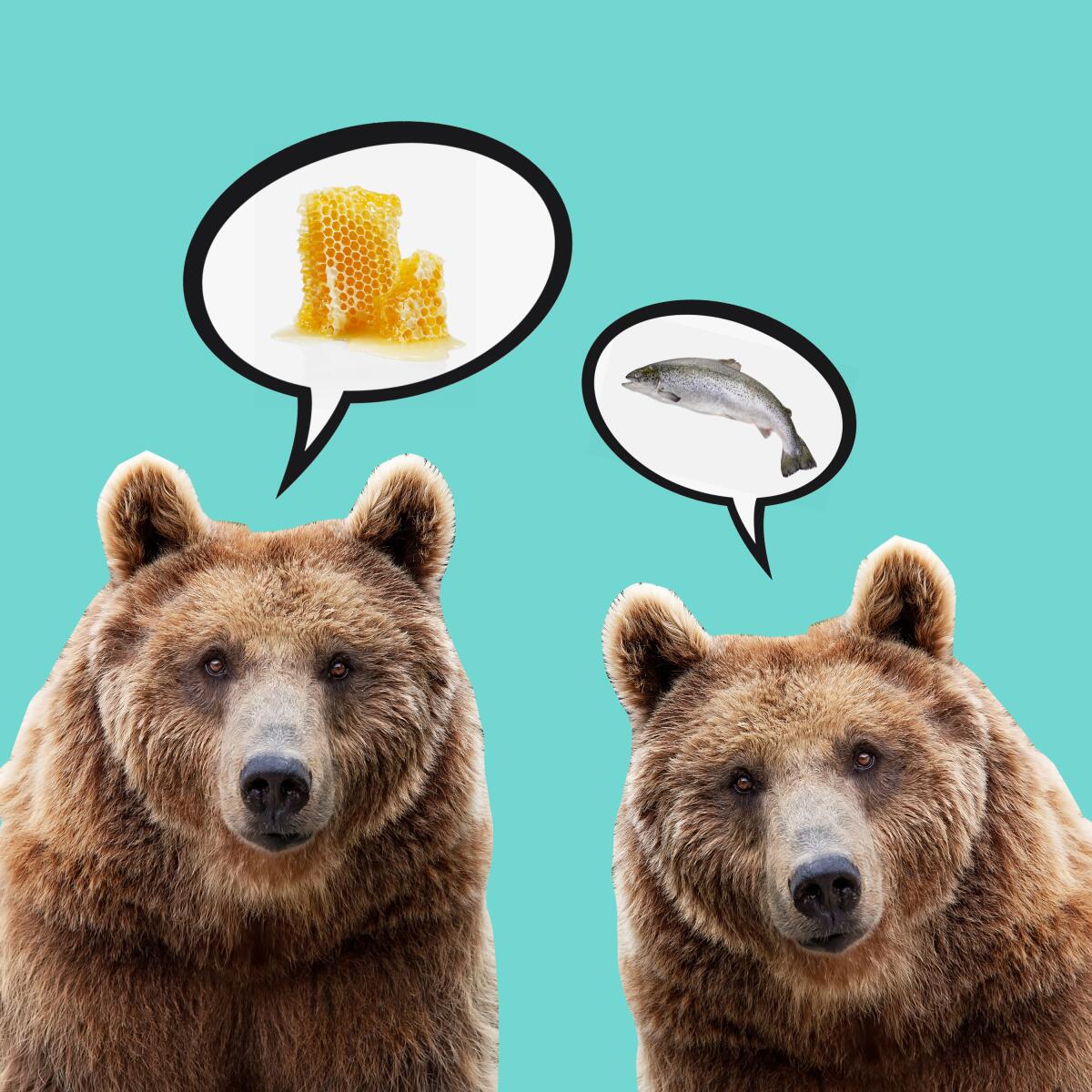
Who could resist a column called “Ask a Bear”? Spoiler alert: Bears don’t write the answers to the Backpacker magazine column, bear experts do. A recent example:
“Q: What happens to pregnant bears who have a cub due while they’re hibernating? —Sleepy Sally
“A: Plot twist: We always have our cubs while we’re hibernating. Crazy, right? OK, let me blow your mind again: Grizzly cubs are born weighing a single pound each — smaller than most human preemies.”
The column continues with more in-depth info and baby-bearing among bears. There’s a lot of myth-splaining too, like whether bears are lazy and whether they really like honey.
California has its own mythology tied to grizzlies, otherwise known as Ursus arctos californicus. In 1849, the bears (like the one on the state flag) numbered 10,000 in the state. By the late 1920s they were extinct, many killed by early settlers protecting their livestock. Newspaper titan William Randolph Hearst in 1889 pulled off a publicity stunt (he challenged an employee to prove that grizzlies still existed) that brought a grizzly trapped in the Ojai Valley to San Francisco’s Golden Gate Park. The bear was named Monarch, and thousands came to see him. The bear remained on display before being euthanized in 1911. Now Monarch’s stuffed remains are on display at the California Academy of Sciences in San Francisco. The museum hosts a free online evening session with experts to discuss Monarch and California grizzlies at 7 p.m. on Feb. 25. Sign up online here.
The red flag

I know how much people like hamburgers. My colleague David Lazarus likes them too. But that didn’t stop him from writing about why we should cut back on how many we eat. In his column “Burgers are great. But make no mistake, they’re killing the planet,” Lazarus demystifies a recent “beef is good” report by the livestock industry and looks at the link between burgers and greenhouse gases.
“Beef is by far the most resource-intensive way anyone can get a nutrient,” Gidon Eshel, a research professor of environmental physics at Bard College told him. “If you want to make a simple change to your diet to protect the environment, there’s nothing you can do that comes anywhere close to forgoing beef.” This may not be easy for meat lovers to hear, but it’s a discussion we all must have. Read the full story here.
Social moment
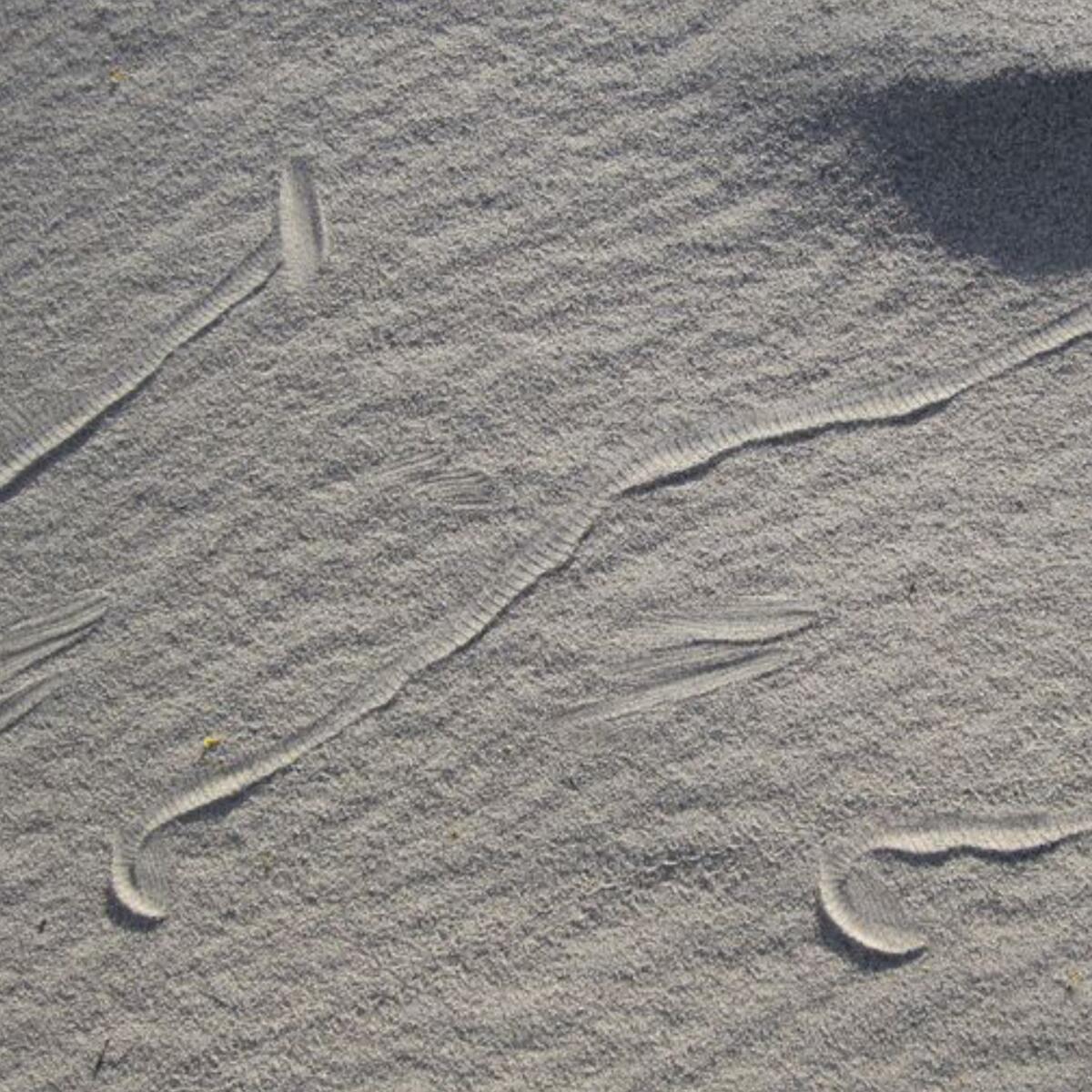
Let’s just call this “snakes on a plain” or “ghost snakes.” Death Valley National Park explained the unusual desert tracks on Facebook this way: “Have you ever seen J-shaped tracks like these? These impressions were left behind by a Mojave Desert Sidewinder! Many snakes will leave a wavy line behind as they slither across the ground, but the sidewinder’s tracks are different as they pick up part of their body as they move. This helps keep them cooler as it reduces the amount of time any specific part of their body is in contact with the hot sand!”
P.S.
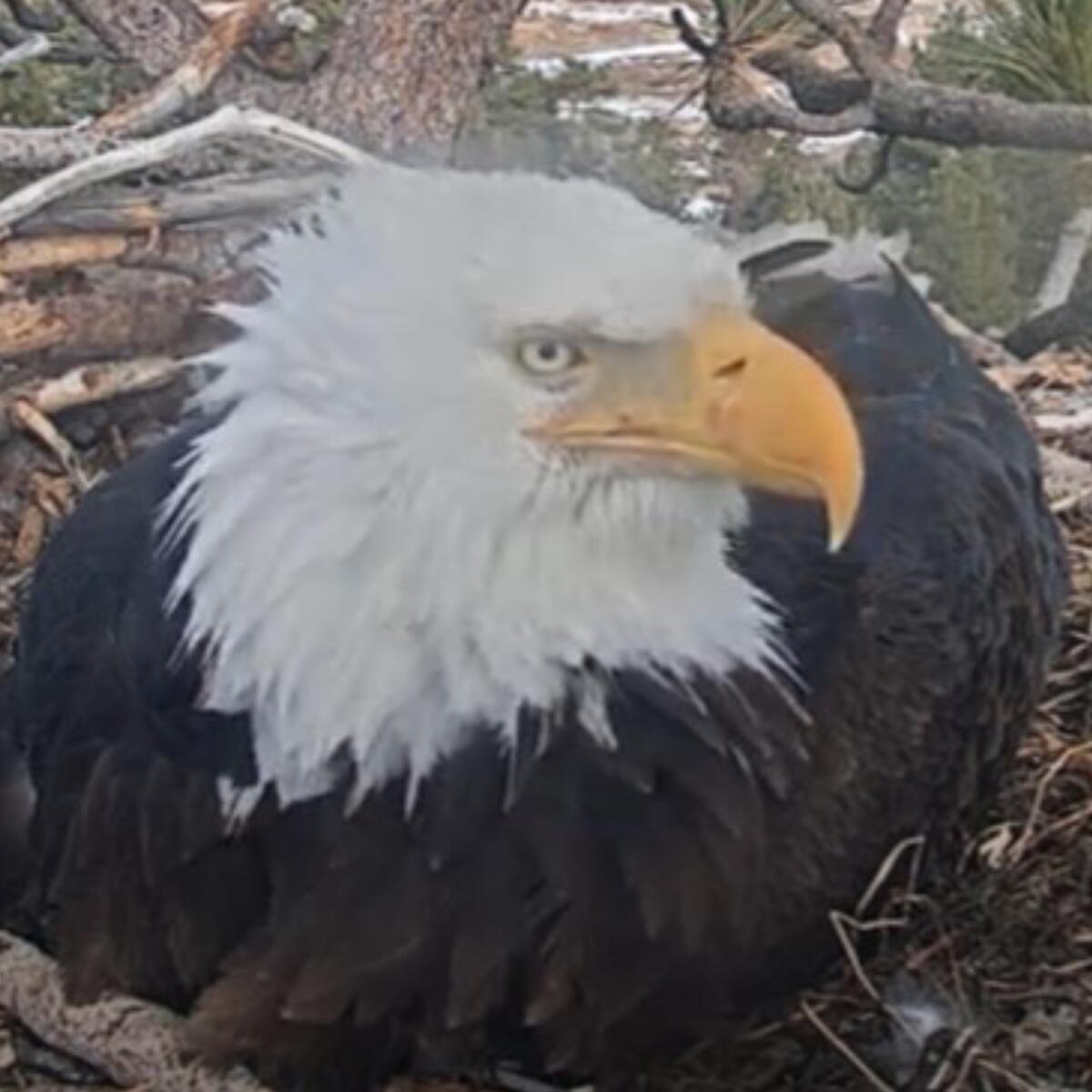
Just when some of us gave up watching everyone’s favorite bald eagle nest, there was a surprise. “After losing their first three eggs of the breeding season, Big Bear Valley’s celebrity bald eagle couple have another chance at a chick,” this L.A. Times story said. The couple, nicknamed Jackie and Shadow, welcomed the first egg on Feb. 8 and a second egg on Feb. 11. “Shadow [Jackie’s mate] was by her side for much of the beautiful event. Jackie looks good and is now resting,” the Friends of Bear Valley said in the Facebook post. It’s time to start watching again; here’s the eagle cam link.
Send us your thoughts
Share anything that’s on your mind. The Wild is written for you and delivered to your inbox for free. Drop us a line at [email protected].
Click to view the web version of this newsletter and share it with others, and sign up to have it sent weekly to your inbox. I’m Mary Forgione, and I write The Wild. I’ve been exploring trails and open spaces in Southern California for four decades.

Sign up for The Wild
We’ll help you find the best places to hike, bike and run, as well as the perfect silent spots for meditation and yoga.
You may occasionally receive promotional content from the Los Angeles Times.




